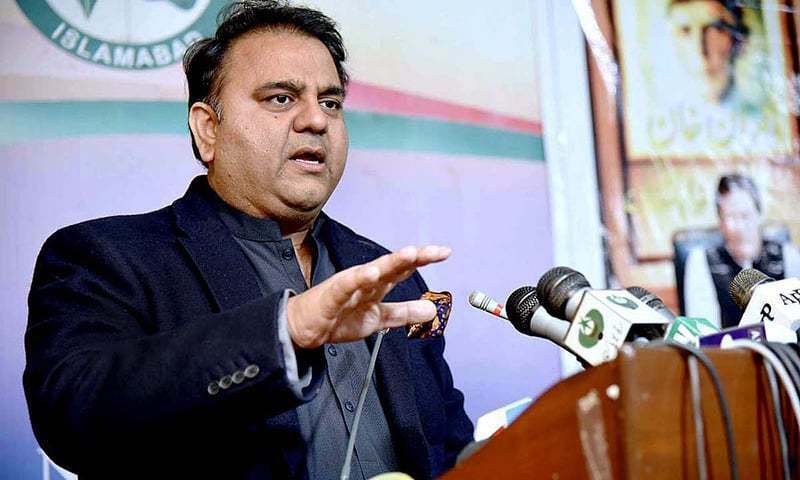
While addressing a consultative conference on terrorism in Islamabad last month, Pakistan’s Federal Minister for Information and Broadcasting [I&B] Fawad Chaudhary said, “We don’t have any potential threat from India . . . We face no danger from America . . . We face no danger from Europe. The biggest danger we face is [extremism] from within.” For a country that has consistently remained in a perpetual state of denial to acknowledge that ‘domestic extremism’ is Pakistan’s greatest threat was a welcome sign as it indicated the possibility of Islamabad’s paradigm and long overdue shift towards reality.
However, this was not to be. Just the other day, Chaudhary seems to have suddenly realised that the real “danger for Pakistan” comes from “two extremist regimes [that] have cropped up on [the] right and left of Pakistan”. It appears that what he wants the world to now believe is that whereas Pakistan doesn’t have any serious extremism related problems, Kabul’s “retrogressive thinking” could find resonance in Pakistan and New Delhi’s “Hindu extremist mindset” would spawn extremist ideology within the country. Hence, it’s amply clear that there’s no change in Islamabad’s self-deceiving view that extremism within Pakistan is being sustained and propelled by external forces.
One had thought that after its bitter experience with Tehreek-e-Taliban Pakistan [TTP], Islamabad would have stopped living in wonderland and revisited its unsubstantiated ‘foreign hand’ obsession. Ever since this terrorist group came into being in the early 2000s, Islamabad has branded it as India’s creation. To ‘prove’ this incredulous allegation, it even produced former TTP spokesperson Ehsanullah Ehsan before the camera to talk at length about this group’s strong links with India’s intelligence agency R&AW. However, Pakistan army’s failure to charge Ehsan and his mysterious ‘escape’ from the military’s custody let the cat out of the bag!
Yet, when India pulled out its diplomatic staff from Afghanistan due to Taliban’s onslaught a jubilant Chaudhary kept up the pretence, exclaiming that “We should be satisfied to know with regards to the TTP, that for the first time the process of Indian funding [to TTP], which had been going on for a long time, has ended and at this time they are in disarray”. However, instead of being in a state of disarray, there was such a quantum increase in the intensity and ferocity of TTP attacks against Pakistan army, that Rawalpindi made Islamabad eat crow by opening negotiations with those who perpetuated the 2014 Army Public School Peshawar carnage and has all along been touted as India’s proxy!
So, it is apparent that the I&B Minister’s demonstrated concern of internal developments in India and Afghanistan triggering Chaudhary extremism within Pakistan is nothing but another attempt to downplay Rawalpindi’s more than four-decade old symbiotic relation with this scourge. After the Soviet invasion of Afghanistan in the 70s, it was Pakistan army’s spy agency ISI that willingly became an unquestioning and servile lackey of America’s CIA, and at its bidding created a force of highly radicalised fighters who called themselves ‘mujahideens’ and were convinced that they were not fighting America’s proxy war against the Soviets in Afghanistan but waging ‘jihad’ [holy war].
Former Pakistan President and army chief Gen Pervez Musharraf has admitted that “In 1979, we had introduced religious militancy in Afghanistan to benefit Pakistan and to push Soviets out of the country. We brought Mujahideen from all over the world, we trained them, [and] supplied weapons.” Whereas he didn’t elaborate on what “religious militancy” meant, but there can be no two views that this was undoubtedly the process of promoting religious fundamentalism by contorting and misinterpreting Islamic tenets to bestow divine sanction on violence and bloodshed! Despite Chaudhary’s prognosis that provocative acts by “two extremist regimes” [India and Afghanistan] could spawn extremism in Pakistan, the fact of the matter is that if extremist ideology in Pakistan is thriving today like never before, it’s thanks to Pakistan army exercising extra-constitutional powers and through Faustian deals compelling the Imran Khan led government to make comprises with politico-religious groups that brazenly promote retrogressive thinking and propagate violent ideology. Pakistan army brokering a deal between the government and Tehreek-e-Labbaik Pakistan [TLP] to end the 2017 Faizabad ‘sit-in’, with DG ISI and not a government representative signing the agreement as ‘guarantor’, is a case in point.
Since Chaudhary has insinuated that external influences are prime sources radicalising Pakistanis, it becomes all the more necessary not only to set the record straight, but expose his duplicity on this issue. Readers would recall that in an interview given to Der Spiegel, Musharraf had revealed that “We poisoned Pakistani civil society for 10 years when we fought the Soviets in Afghanistan in the 1980s.” By acknowledging that “educational institutions [in Pakistan] had been radicalised as teachers were hired during the 80s and 90s as part of a plot to teach extremism”, the I&B Minister has further endorsed what Musharraf had said. This is why Chaudhary’s attempt to play the ‘victim card’ and portray Pakistan as a hapless target of external machinations will fool no one!
